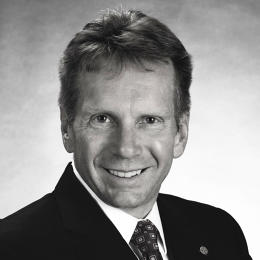Can A STEM Program Help Make Boy Scouts Relevant Again?
Michael Jurkowitz is a fifth grader in Tucson, Arizona. He—like most other kids his age—enjoys hands-on projects well enough, but probably isn’t the geekiest or most science- or math-heavy kid of the bunch. Two summers ago, he attended a summer science weeklong camp, which looked like a fun summer activity. That weeklong program piqued his interest in the STEM field. So Michael’s father, Daniel, signed him up for a newly formed Boy Scout STEM lab and even offered to be an assistant lab leader (the modern version of a troop leader).
Daniel was happy to have his son participating in a program that delved into science-like activities and didn’t come across like boring school subjects. “The learning was a dose-of-sugar kind of thing,” he says, which he was happy to instill in his son. Michael liked the activities. When I talked with him he rattled off a few experiments he’d done the last year, including studying bugs, shaking eggs in bags trying to get them not to break, something else involving milk, along with numerous other fun-sounding tasks. Where Michael just enjoyed this new way to learn, his father saw the program as an overall way to “grow a new generation of scientists out there.”
The program, called STEM Scouts, is an offshoot of the Boy Scouts. Beyond just getting young kids interested in science, technology, engineering, and math careers, the hope is that STEM Scouts will also reinvigorate the century-old institution that has been heavily criticized in recent years for being behind the times.

The Boy Scouts have been a ubiquitous American organization and a rite of passage for millions of boys for over a hundred years. But, while focusing on building leadership skills through outdoor and community service activities, they also embodied a values system that didn’t survive the 20th century. While some say that the changes toward inclusivity have been incremental and overall not enough, STEM Scouts aims to bring in those who traditionally don’t fit under its umbrella—even girls.
It’s been over a year since the program first began, will the STEM Scouts be enough to keep the organization relevant for future years?
Keeping The Ethos While Changing The Medium

The thesis behind STEM Scouts was to “replicate in the lab environment the things that had been proven and tried in the Cub Scout and Boy Scout programs,” says Mike Surbaugh, the CEO of the Boy Scouts of America. As he explains it, Boy Scouts is an outdoor activity program that fosters individual leadership skills. This new science-based program would be similarly focused, just in a new environment. The ultimate goal of both program is “developing character and leadership.”
The model for STEM Scouts looks an awful lot like other after school programs. Volunteers such as parents or teachers lead a cohort of kids from elementary to high school ages in weekly activities. The idea was to a build upon what April McMillan, one of STEM Scouts’ national directors, called “the framework of scouting,” which would theoretically differentiate it from other programs.
Many after-school STEM organizations work like codeathons or science- and math-heavy bootcamps, focused on teaching students specific skills to perform various tasks; STEM Scouts would perform similar activities, but the primary component, as the leaders explained it, would be to teach students to take the reins of projects and learn lessons beyond the rote skills taught.
Often experiments would fail, but if the participants were able to work around the constraints and work with the others in the room, they would be considered successful. The idea is more to get kids excited in the STEM field, and less about giving them hard job-training skills.
According to Surbaugh, inklings of a different, more inclusive program have been around for years. The organization was looking into ways that could bring in students who may not be interested in the more outdoorsy side of Boy Scouts.
Activities included anything from making play-doh or conducting various observation and science experiments. As more groups were added to the mix, programs were refined. While the program is anything but set, the last year has been the real testing ground to see if the Boy Scouts can build a STEM pedagogy that can scale.

A Different Measure Of Success
The program’s leaders haven’t crunched any formal numbers on the impact of STEM Scouts, but pointed to anecdotal data they’ve received from teachers and principals who saw increases in kids’ test scores. One teacher McMillan talked with “attributes a test score increase of nearly 20%,” she said.
Since its inception over a year ago more than 200 labs have been formed with more that 2,000 kids between grades 3 and 12 participating. Each lab follows a methodology set out by the Boy Scouts every week to perform science experiments. All of the labs are run by volunteers—most are parents or local teachers. Deborah Vasquez, a teacher who leads a STEM Scouts group in southern Texas, says that she does the program because it provides extracurricular STEM programs that the school would otherwise be unable to afford. Most labs have a tuition of about $200 a year, but many of the students Vasquez instructs are able to participate thanks to scholarships.
Most important, says Surbaugh, is that leadership and character building would be the number-one priority for STEM Scouts. He made sure to include that in every lesson plan. “A component of scouting is service,” says McMillan. “That too is incorporated in STEM Scouts.” She pointed to labs whose assignment was to build a game and then go out to children’s hospitals and retirement homes and teach it.
Vasquez views the program as a motivator, a way to bring in students “who aren’t really motivated during the regular school day but have a lot of potential.” The school district she works for, she explains, is represented of more than 80% economically disadvantaged students, many of whom speak English as a second language. Few have access to these types of programs. The STEM Scouts, she says, has become a new way for them to pursue more educational projects outside of the classroom. One year out, Vasquez says the students enjoy it and have been asking about when the next session will begin. “I know they’re waiting for it,” she says.

The Evolving World
Of course an extracurricular STEM program is no revolutionary idea. There are hundreds out there, most purporting to do similar things of exciting young minds and showing them the possibilities of STEM-like career paths. The Girl Scouts have been investing in getting girls more involved in science, math, and technology for five years, and in 2011 began including Science and Technology badges, which can be earned for performing trips and services in those fields.
In many ways, STEM Scouts can be seen as an attempted optics shift. I asked Surbaugh about the last years’ controversy, and he admitted that the last while has been a time for transformation for the organization. When faced with opposition, the Boy Scouts leadership came together to figure out what called an “effective approach,” which resulted in them “[becoming] very inclusive.” He added that “STEM Scouts did not factor into [the new policy].”
At the same time the Boy Scouts can still seen as the traditional organization it’s always been. When asked why STEM Scouts is co-ed, he said the model fit better for both young men and women. The Boy Scouts’ activities, said Surbaugh, work better with a group of the same gender; “We feel the structure and outdoor element [of Boy Scouts] … lends itself to single gender.” The Boy Scouts of America didn’t think that differentiation was needed for the STEM program; “It was really based more on the educational pursuit more than the gender,” Surbaugh said.
And for now, the program will continue to test the waters. Surbaugh considered the last year to be a success and sees an opportunity to grow. The Boy Scouts of America has plans to have as many as 320 labs up and running by the end of 2016.
Will this help bring the organization toward more progressive policies? At the very least, it will allow both boys and girls the opportunity to be exposed to the subject matter. For Vasquez, the opportunity has been to give students a chance to experiment. They were able to try things out—many of which didn’t work—but gain a better understanding of the underlying subjects. And this, she says, taught them to be more independent and begin thinking for themselves. “We helped them facilitate the learning,’ she says. “But the kids took over.”
For Daniel Jurkowitz, he’s happy to take part in a program that gets his son excited in science. Last year was “a really good first effort,” and he’s happy that it’s back up and running. Michael too is excited. The fifth grader doesn’t know what he wants to be when he grows up, but he’s already thinking about the future. STEM Scouts, he says, is teaching him “different kinds of skills we can use in life.”
Fast Company , Read Full Story
(76)














